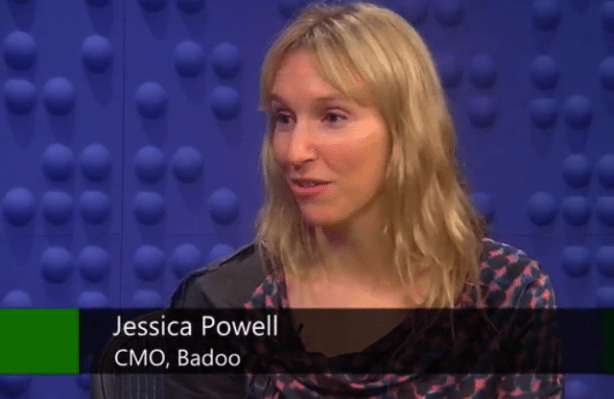Badoo, the online network for meeting new people recently reached 130 million registered users and now brings in $100 million a year. Based out of London’s Silicon Roundabout, Badoo would be the 4th biggest social network if it was just a social network. But Badoo adapts to the local needs of its international user base. In the UK it’s used for casual dating, in the Czech Republic it’s a marriage site, and in Indonesia burqa-clad women find self-expression on the site. To give us insight into how Badoo reached its stellar revenues, built its user base, and succeeded in Europe, we brought Chief Marketing Officer Jessica Powell in to talk to us on TechCrunch TV. Watch as she tells us how 50% of the conversations on Badoo now lead to an offline meetup.
Badoo has attained massive success without requiring a presence in Silicon Valley. Powell cites London and Berlin and upcoming innovation centers where European startups should consider moving if they’re serious about finding funding and great talent.
Back in 2006, Badoo saw Facebook’s explosive growth and instead of trying to compete, it differentiated by focusing something Facebook wasn’t — helping strangers connect. Startups shouldn’t think about what’s fun or interesting, but should identify a widespread problem that isn’t already being addressed by another company. For example, helping people capture the beauty from their every day lives sounds fun, but Instagram has that mostly covered, and there’s not much more of a problem to solve in photo sharing.
While it can be tempting to gate some crucial features behind a pay wall, Badoo decided to make all of its core functionality free. Powell tells me this has contributed to its 60% year over year user growth, because all users feel like they’re getting the full experience. While it was growing to a scale where it could support itself, Badoo took $30 million in funding. Now it doesn’t need to take additional funding rounds.
To reach its $100 million in yearly revenues, though, Badoo lets users pay to be more visible and learn who they should try to start a conversation with. It employs a combination of micropayments that allow users to improve their search ranking, and subscriptions to special features like the ability to see who has viewed their profile. It’s only starting to allow outside advertisers to buy space on the site, meaning there’s plenty of potential for its revenues to grow.
Badoo has laid a sensible path to monetization that others startups can learn from. Give away the core functionality, take serious funding so you don’t have to monetize too aggressively too early, get users hooked on a quality experience, and then upsell them on perks that help them more efficiently attain their desired outcomes.
